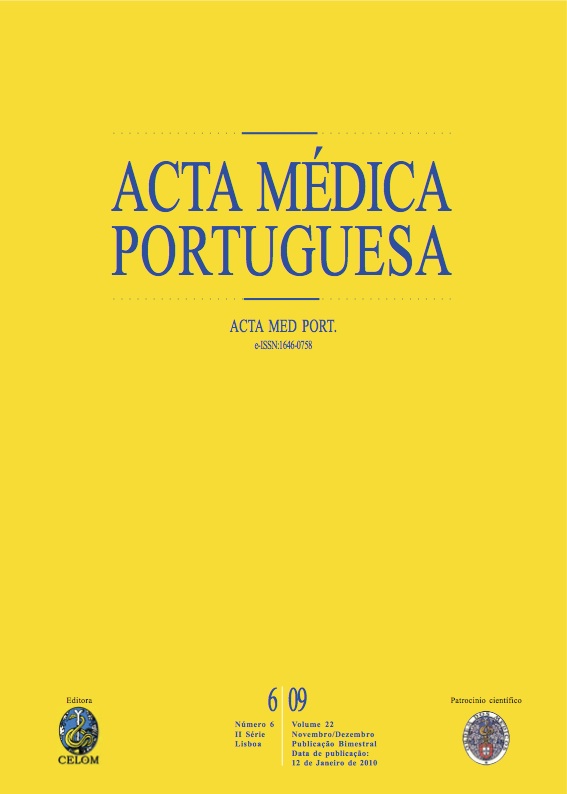Amigdalite estreptocócica: presunção clínica versus diagnóstico.
DOI:
https://doi.org/10.20344/amp.1733Resumo
Pharyngitis is a very prevalent illness in the ambulatory care setting. Its diagnosis is a challenge, especially in the differentiation between the viric and streptococcal causes.A formulary was made to register the clinical and laboratory data; a throat swab for culture was obtained from all the children who presented to the emergency department with sore throat and/or signs of pharyngitis/tonsillitis, for a period of three months (15th of April to 15th of July of 2006). The signs and symptoms, prescribed antibiotherapy and frequency of false diagnostics were evaluated and the clinical suspicion compared with the diagnosis by culture.158 children were evaluated, with a median age of four years, with a male predominance (56%). The period that showed the greatest number of cases was the first fifteen days of May. Forty-three percent of the cultures were positive for Streptococcus pyogenes. The more frequent signs and symptoms in pharyngitis were pharyngeal erythema (98%), fever (86%) and sore throat (78%). A significative statistical difference was found for cough, scarlatiniform rash, tonsillar exudate, palatal petechiae and tonsillar swelling. Of the signs and symptoms studied, only three of them presented a positive predictive value superior to 50%: scarlatiniform rash (85%), palatal petechiae (63%) and cough (57%). The presence of tonsillar exudate had a positive predictive value for non-streptococcal pharyngitis of 70%. Fifty-three percent of the doctors considered streptococcal pharyngitis highly probable, and from this, 56% had a positive culture for Streptococcus. Those who considered a low probability, the culture was positive in 28%. There were 37% of false diagnosis.The distinction between streptococcal pharyngitis and non-streptococcal pharyngitis is not always correct when based on clinical characteristics. The use of diagnostic tests is important in order to avoid unnecessary antibiotherapy as well as to allow the correct use in the positive cases.Downloads
Downloads
Como Citar
Edição
Secção
Licença
Todos os artigos publicados na AMP são de acesso aberto e cumprem os requisitos das agências de financiamento ou instituições académicas. Relativamente à utilização por terceiros a AMP rege-se pelos termos da licença Creative Commons ‘Atribuição – Uso Não-Comercial – (CC-BY-NC)’.
É da responsabilidade do autor obter permissão para reproduzir figuras, tabelas, etc., de outras publicações. Após a aceitação de um artigo, os autores serão convidados a preencher uma “Declaração de Responsabilidade Autoral e Partilha de Direitos de Autor “(http://www.actamedicaportuguesa.com/info/AMP-NormasPublicacao.pdf) e a “Declaração de Potenciais Conflitos de Interesse” (http://www.icmje.org/conflicts-of-interest) do ICMJE. Será enviado um e-mail ao autor correspondente, confirmando a receção do manuscrito.
Após a publicação, os autores ficam autorizados a disponibilizar os seus artigos em repositórios das suas instituições de origem, desde que mencionem sempre onde foram publicados e de acordo com a licença Creative Commons









